As I was preparing for my next textile project I received an invitation from the Philippine Textile Research Institute (PTRI) of the Department of Science and Technology (DOST) to participate in the “TELA Nation” Conference. This was held last January 28, 2016, at the DOST Executive Lounge from 9am to 5pm.
I was also invited to exhibit my entry entitled “Di-Matinag” (Indestructible), finalist for the 53rd Japan Fashion Design contest. It was a perfect venue to display the entry since it was promoted alongside the recent textile developments of PTRI’s engineers and scientists.
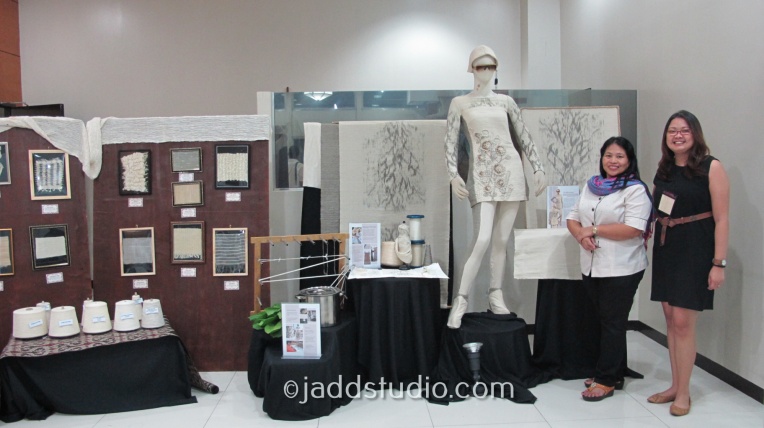
I remember the first time I attended a PTRI conference. It was about 3 years ago (June 2013) when Ms. Virmila Alvarez, who is a former specialist in PTRI, invited me to attend. If not for her invitation, I would have zero knowledge and appreciation for traditional textiles and local natural fibers.
The conference, which PTRI yearly hosts in celebration of the Philippine Tropical Fabrics Month, always brings new insights and ways to appreciate our local fibers. Through this platform, designers, entrepreneurs and researchers interact and determine the challenges our textile industry faces and discuss possible solutions.
To my delight I am now acquainted with potential collaborators who share similar interests in local textiles. And we hope that one day, our joint efforts in revitalizing this industry will soon come to fruition.
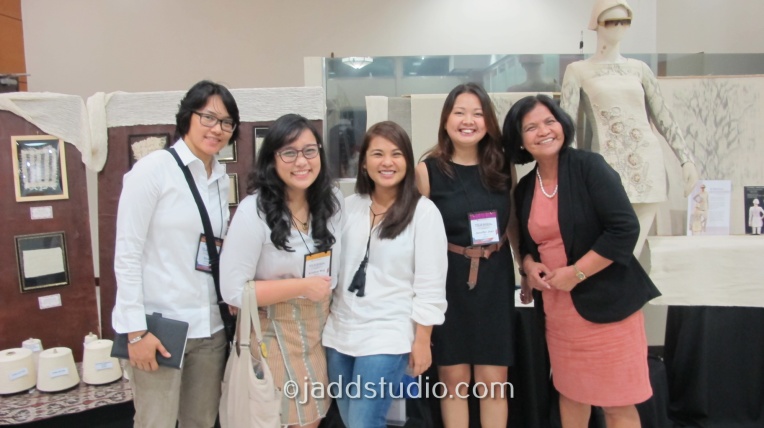
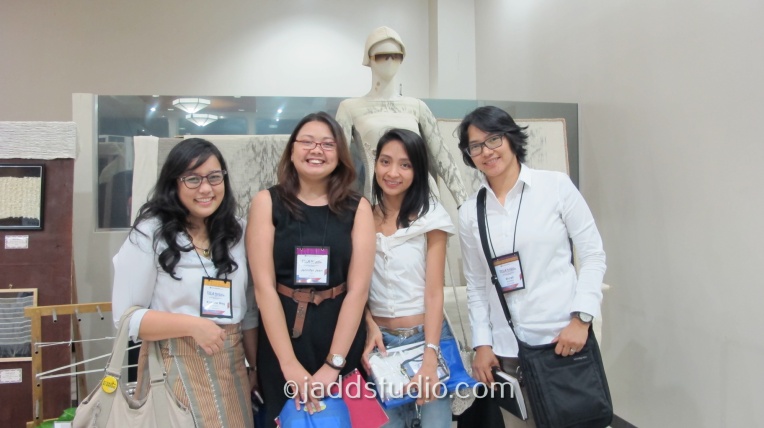
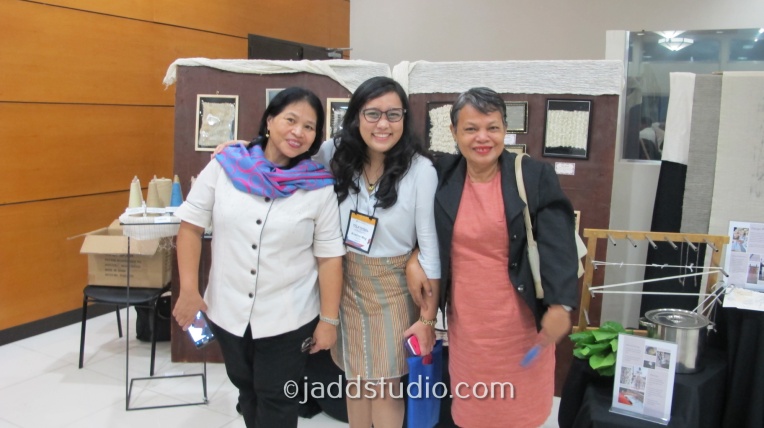
For the morning session we were graciously welcomed by the Director Celia Elumba together with DOST Secretary Mario Montejo. The opening remarks included a vivid account of the local textile industry then and now. Insights on the local and international market were candidly provided by the Department of Trade and Industry (DTI) Assistant Secretary of Industry Development Group Ceferino Rodolfo. ASEC Rodolfo described the market opportunities for natural textiles for local use and for export which can be reassuring to potential investors and entrepreneurs who are interested in the business.
He was followed by social entrepreneur Anya Lim of Anthill Fabric Gallery who shared her business model that focused on product innovation and distribution of locally woven textiles geared towards the young local market.
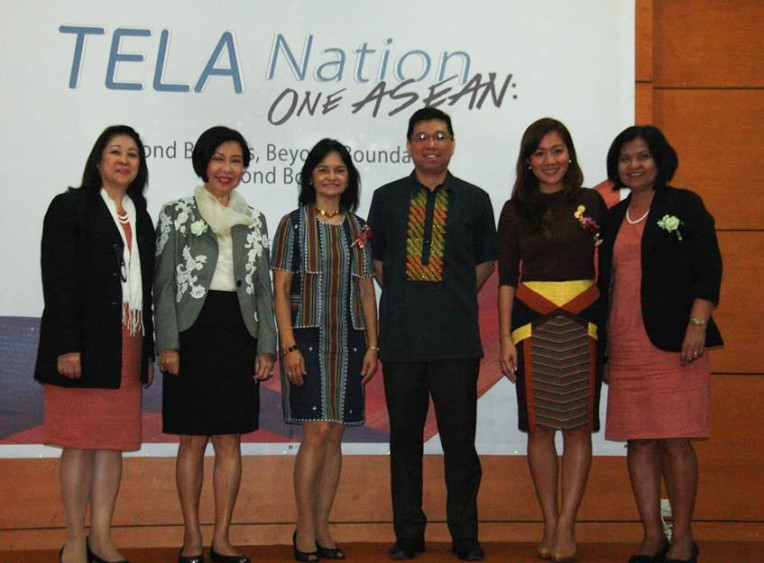
As we enjoy our morning snack, PTRI together with Commissioner Purificacion Delima of Komisyon sa Wikang Filipino (Commission on the Filipino Language) soft-launched their joint publishing project, A Bi-lingual Technical Manual on Handloom Weaving. Just last year while I was taking my first course in handloom weaving my teacher and I were discussing the possibility of writing a book in Filipino and in other native languages since it was rather challenging for many weavers to learn it in English. Lo and behold, in less than a years’ time we finally have a manual in Filipino. Thanks to PTRI in initiating this project and for the Komisyon ng Wikang Filipino for accepting the task.
Engineer Nora Mangalindan, chief of Research and Development Division of PTRI, provided a summary of some of the institutions’ S&T Initiatives towards the revitalization of the Philippine textile industry. While I was listening to her presentation I cannot help but daydream about the day I get to use those technology in the textiles I will make.
Last but not the least, we listened to renowned designer Jean Goulbourn, CEO of the company Silk Cocoon, as she narrated her personal challenges and successes in the business of textiles and fashion. A lot of us in the room were very surprised to learn how our textiles are highly appreciated and valued by international companies and designers. And sadly, very few of us see value in it. In order to achieve the level of success in promoting and sustaining a textile and fashion business we must find balance and harmony between creative and business practices.
Ms. Goulbourns revelations were very reassuring since the research and product development on local textiles required a lot of effort, patience and resources to assure it meets global standards. It remains a niche and an emerging trend. The current state of our local textile industry focusing on natural and blended materials is no match to imported goods that are cheaper and more durable. However, we must now begin to question our patronizing non-local goods, including local brands purporting to “go local” while continuing to use non-local materials and labor.
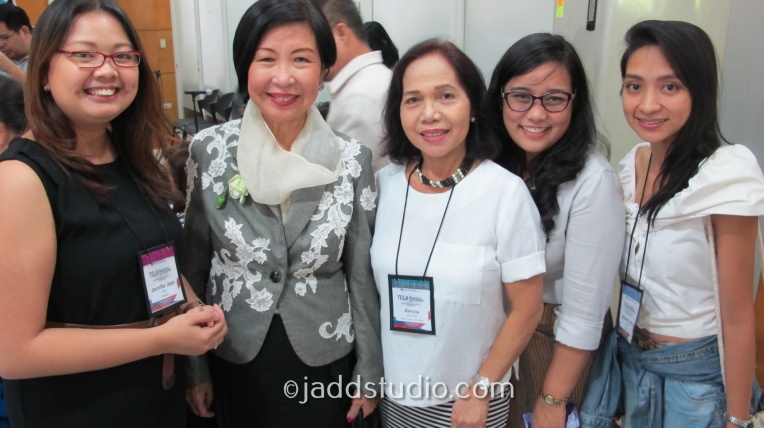
Ms. Goulbourn boldy invited everyone to sign a petition to tell retail giant, Bench, to really go local.
The first half of the conference ended with an open forum over lunch. Immediately after lunch we began the second part, a roundtable discussion focusing on the concept of “Mula Sakahan at Lupa, Hanggang Baro at Saya” (From farm and soil to dress and joy).
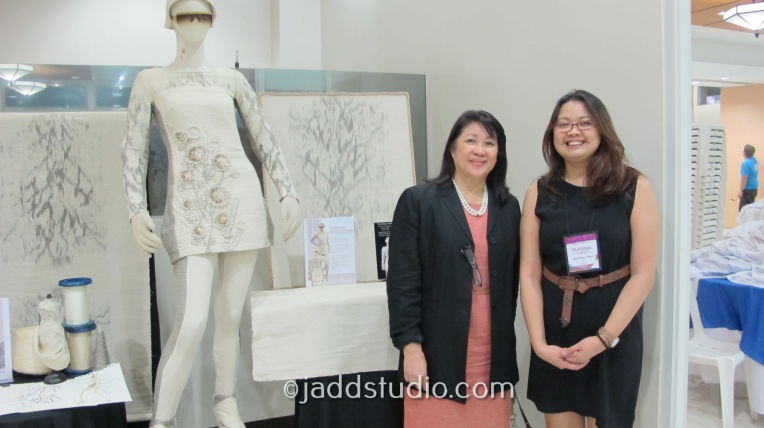
Several presentations took place before the roundtable discussions (RTD). Director Elumba presented the idea of establishing Regional Yarn Innovation Centers (RYIC). Mr. Petronilo Jabay, the OIC-Deputy Executive Director of Department of Agriculture-Philippine Fiber Industry Development Authority (DA-PhilFida) presented the various fibers that are abundant in the different regions of the country. Ms. Meg Roxas, Executive Director of Culturaid, Inc. also shared her firsthand experience in working with indigenous weavers and the issues they encounter when sourcing products from them.
After the presentations the RTD began, facilitated by Prof. Fortunato T. Dela Peña of U.P. Engineering Research and Development Foundation, Inc. We were grouped according to region and I was lucky enough to be grouped with Region 10. We began discussing about the feasibility of having an RYIC following a set of questions.
Our table comprised of social entrepreneurs, educators, analysts, engineers and researchers. The RTD we had was similar to the one recently held at APEC Entrepreneurs conference last July 2015. This has been an emerging trend similar to a focus group discussion. It was interesting to find, based on each one’s specialties and knowledge, that we actually have existing resources to produce yarn in a smaller scale especially in Region 10 where raw materials are available. However, the real challenge lay in the implementation. But let’s leave this problem to be tackled once the idea is further developed. I do hope that we also get a chance to participate in this endeavor.
I am so happy that such a center is being conceptualized. In the beginning of my first textile project, I was frustrated to find out that we had to import our cotton yarns. I had thought that we had some local fibers readily available at least in the institute but unfortunately this was not the case. Our local indigenous weavers had to use a lot of polyester yarns because these were the only ones that are readily available. This issue was also voiced out by Assistant Secretary Rodolfo while presenting various textile products he bought during his regional travels.
Again, this is reassuring for me since this validates the direction of my research on developing micro-industries on fiber production for textiles. I was given a chance to voice out my concerns from the point of view of a designer, at least to the Region 10 table. I told them it is important for institutions to know that designers are trained to develop marketable products. We cannot do this if we are not given a chance to participate in the design development process starting from the fiber development stage. We designers are limited to the materials that are made available to us. While we can certainly develop our own textile, we cannot do so on our own since our specialty does not include the engineering of fabrics.
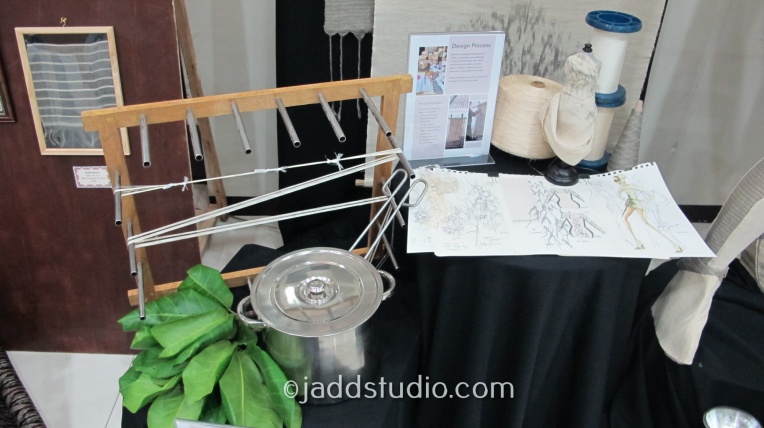
I cannot stress enough the value of revitalizing our own fiber industry and developing a model that is most suited to our culture. Imagine every Filipino as a consumer of sustainable products — all locally sourced, locally manufactured and locally converted into fashion goods. How cool is that?
Impossible?
Laos did it with the revitalization of their silk industry with the vision of Ramon Magsaysay Awardee Kommaly Chanthavong. She promoted culture and livelihood in a business model that allowed local production of silk that created a vital livelihood for the women of Laos. What is amazing about her model is that 70% of the consumers of their weaves were local. This was realized through the support of their local government. Vietnam and Thailand have similar industries. India is one of the leading countries that produce textile and fashion. All these countries have their own fiber industry. Do we need more proof that it is essential and doable? We can definitely do something similar through our own means, but we just really have to commit ourselves to make it happen.

The RTD ended an hour late, but no one was complaining since we really had a fruitful discussion. I believe that a lot of the participants in the event went home excited and fulfilled and now more eager to see PTRI’s projects take shape in the soonest possible time.
The TELA Nation Conference and my exhibited work were also featured in Business Mirror on February 1, 2016. You can read view the article entitled Stakeholders discuss strategies to revitalize PHL textile industry written by Mia Mallari. View the complete article in Business Mirror Online .


One thought on “TELA Nation: Revitalizing the Fiber and Textile Industry in the Philippines”